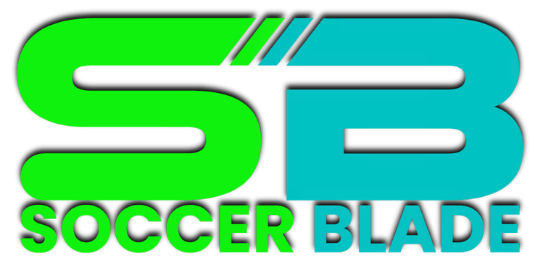Share the post "Where Do You Put Your Weakest Soccer Player? (Easiest + Hardest)"
As a youth soccer coach, I faced the biggest challenge of handling weaker players. Professional team coaches may tell you the best place for a weaker player is the bench. That’s not an option for youth teams, nor is it a good strategy for developing passion or skills in players.
Weaker players need to play to get better, but at the same time, you don’t want it to hurt the entire team. There is no “easy” position in soccer, but it’s often best to put weaker players at wide forward since this position is furthest from your goal. It’s difficult to defend when the pressure is on.
However, to determine the best position for a weaker player on your team, you must assess several factors, including their specific strengths and weaknesses, your other players, and your style of play.
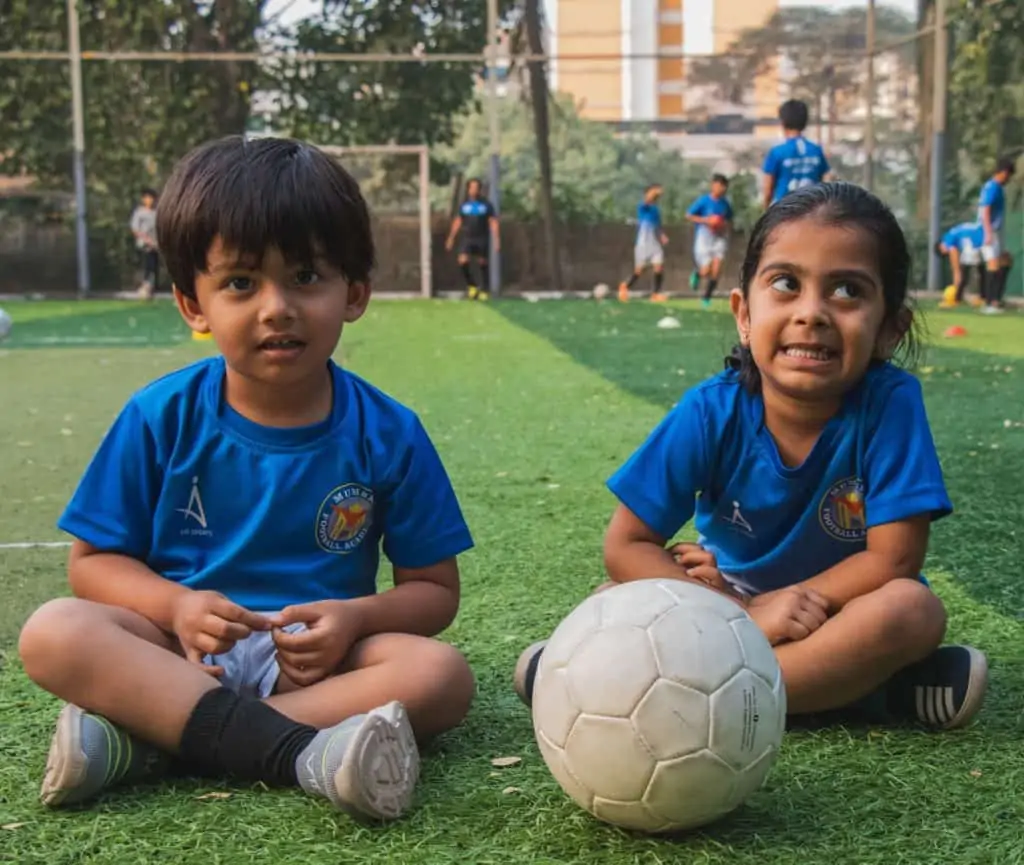
What soccer position is the easiest?
Simply put, no soccer position is “easy”. Each position requires different strengths and skills. However, players with certain weaknesses fit better in some positions than others. Here are some examples of the skills that different positions do not require:
Goalkeeper – What skills are not required
Goalkeepers are your last line of defense, and their #1 job is to keep the ball out of the back of the net. They are also able to use their hands within the box. While the position is becoming increasingly important for possession soccer, goalkeepers generally do not need:
- To be able to run for long distances/ have running stamina.
- Elaborate foot skills (dribbling/ moves).
- The same level of ball handling as other positions.
Defenders – What skills are not required
Defenders are essential in keeping the ball away from your goal and starting the attack. However, most often, defenders don’t require the following:
- The same level of conditioning as some other positions.
- Extensive dribbling skills.
- Great shooting abilities.
- To play in very tight spaces or amongst a ton of pressure.
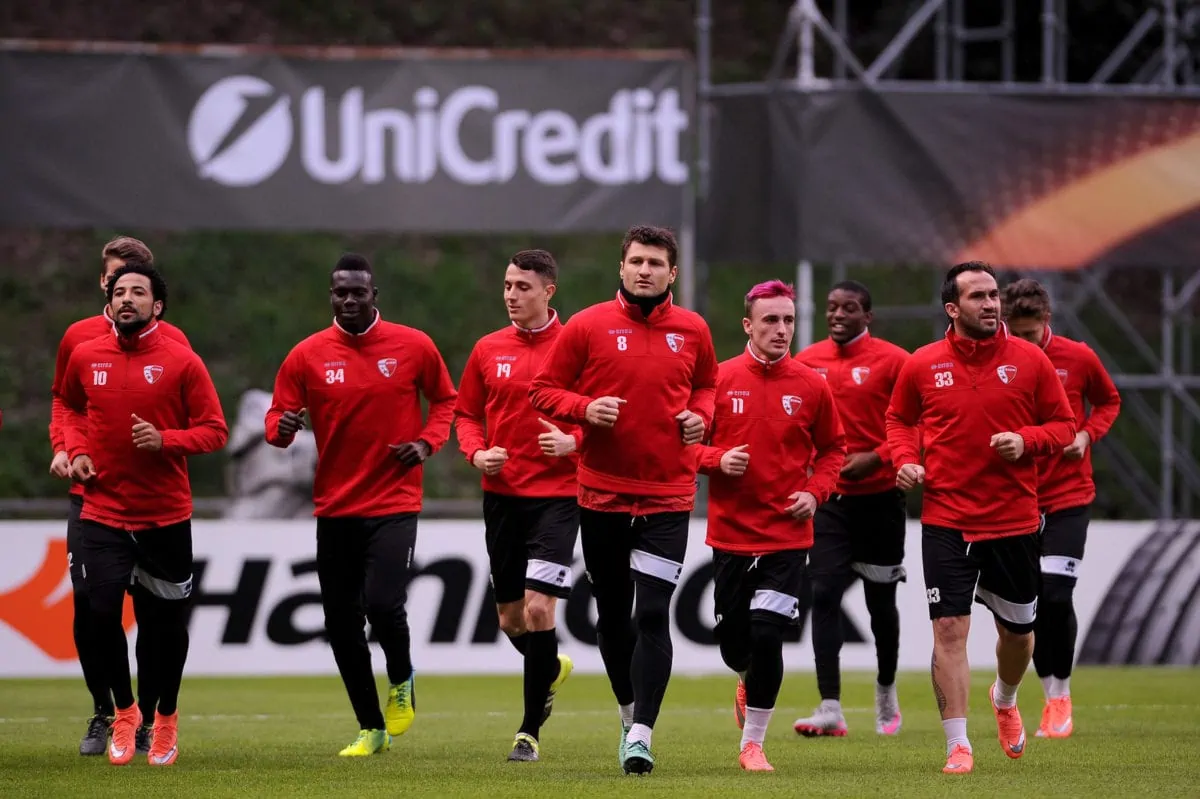
Midfielders – What skills are not required
Midfielders hold down the middle of the field as they are involved in defense and attack. They are masters of transition and cover the most distance in the game. Midfielders are well-rounded and proficient in all significant skills but may lack a standout strength. Compared to some other positions, midfielders may not:
- Be as fast or explosive.
- Require as much shooting.
- Be the best at defending.
- Have a standout skill that sets them apart.
Forwards – What skills are not required
Forwards are the primary players that score goals. They must be willing to take shots and attack balls in the 18, but they may not:
- Be the best with the ball, technically.
- Defend extremely well.
- Have the best tactical vision on the field.
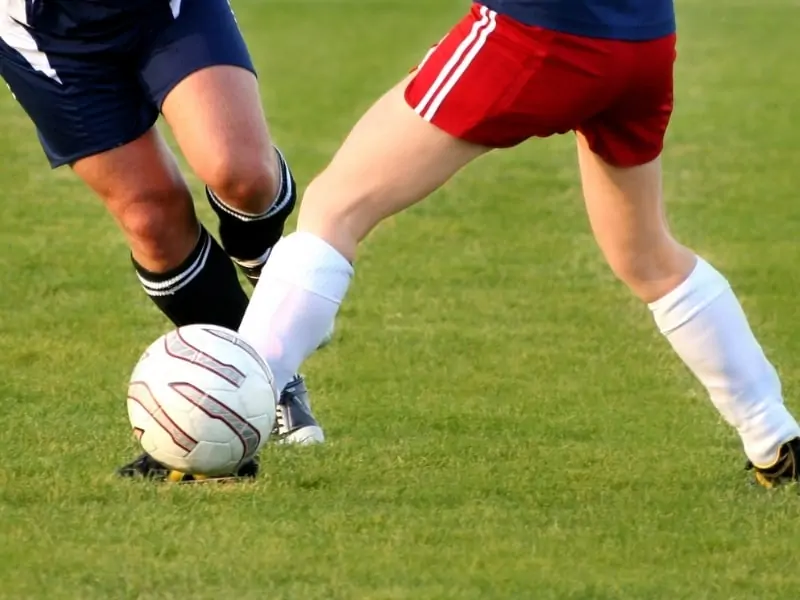
What is the least important position in soccer?
Every soccer position plays an essential role on the team. There is not a single position that does not matter. Some of the least risky positions for your team would be;
- Outside Backs
- Wingbacks
- Wide Midfield
- Second Striker
Many people may think the forwards are the most important. You need at least one goal to win, and goals are hard to come by in soccer. However, it would be best to defend far more than you scored.
You can get away with not scoring many goals, but you cannot get away with giving up a lot of goals. Based on this, it’s important to prioritize defense and midfield with strong players. If you need a goal in the second half, you can risk playing your weaker player in a defensive position to have your best players in attack.
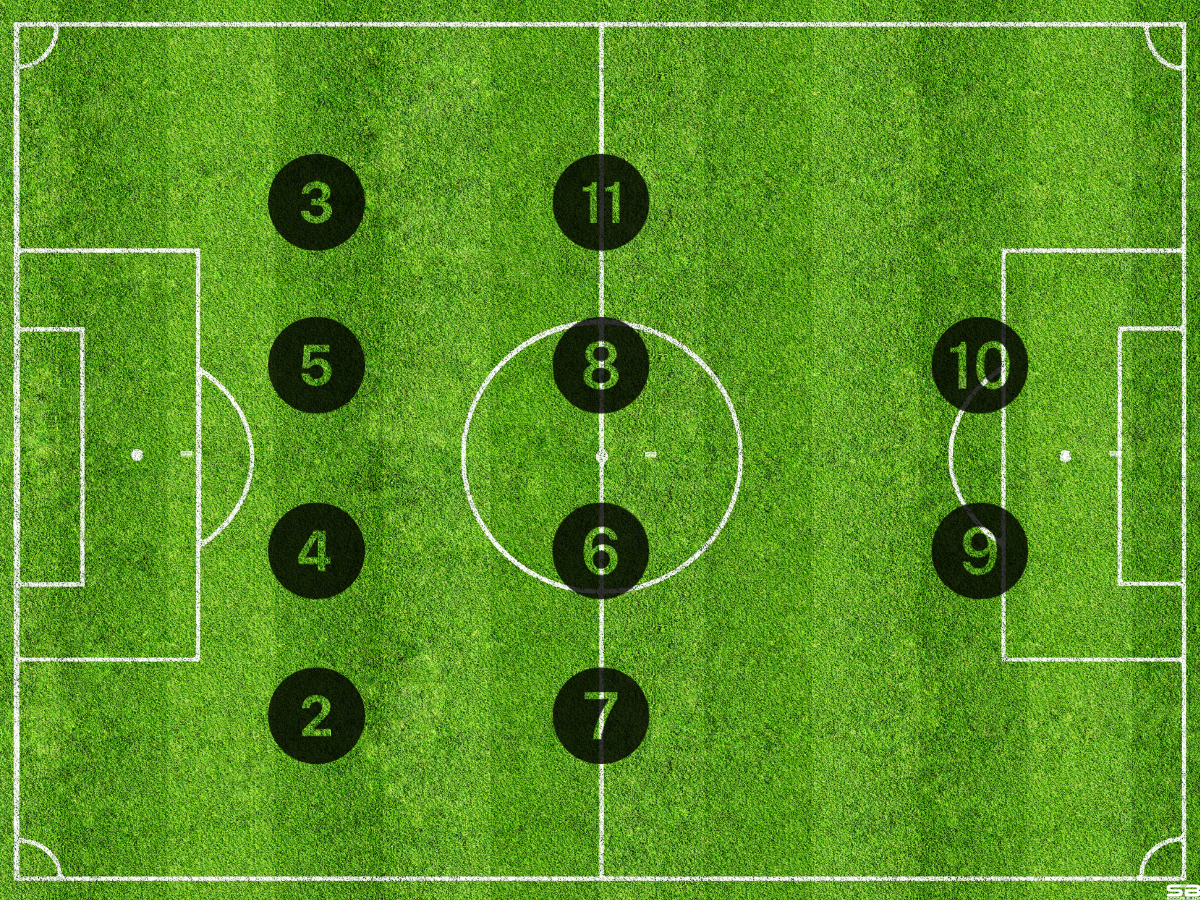
Where do you put the weakest soccer player?
Assess the player’s weaknesses and strengths, find a weakness in the opposition, and position that player based on those two factors, but limit the risk by avoiding the central positions.
Often, you’ll hear “forward” as an answer. A wide forward is sometimes an excellent place to put a weaker player. But in reality, there’s no set answer. You put the weakest soccer player in your team based on the following:
- The player’s strengths.
- The player’s weaknesses.
- Your formation.
- Your strong players and where they will play.
- Your style of play.
Where you put “weaker” players depends on what makes them “weak.” First, you must determine the areas of improvement for the player.
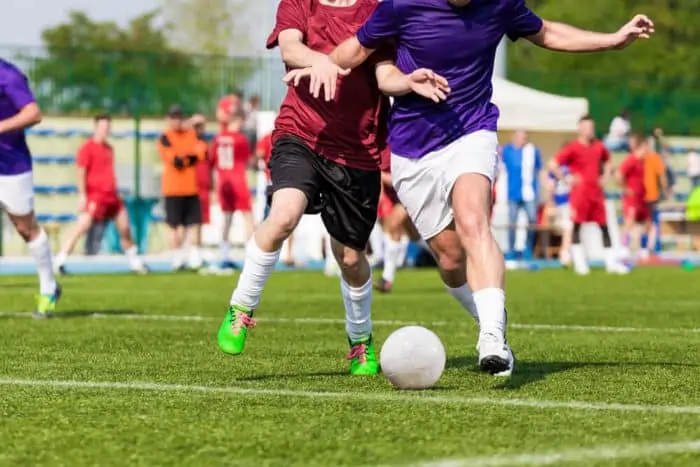
Examples of fundamentals soccer players can struggle with
Based on the specific areas the player struggles in, you can find a suitable position for them. Look for a position that plays to their strengths, hides their weaknesses, and helps (not hurts) your team.
- Fitness and conditioning Physical strength
- Speed
- Passing (accuracy)
- Defending
- Dribbling/ 1v1 attacking
- Shooting (power and accuracy)
- Tactical understanding of the game
- Decision making
- Ball control/ trapping
For example, many coaches may have viewed me as a “weaker” player in youth soccer because I struggled with ball handling and long passes . However, I was a strong defender who excelled athletically.
Based on that combination, putting me as a forward would not make sense. Outside back was a good spot to showcase my strengths while protecting the team from weaknesses by pushing me wider than center back.
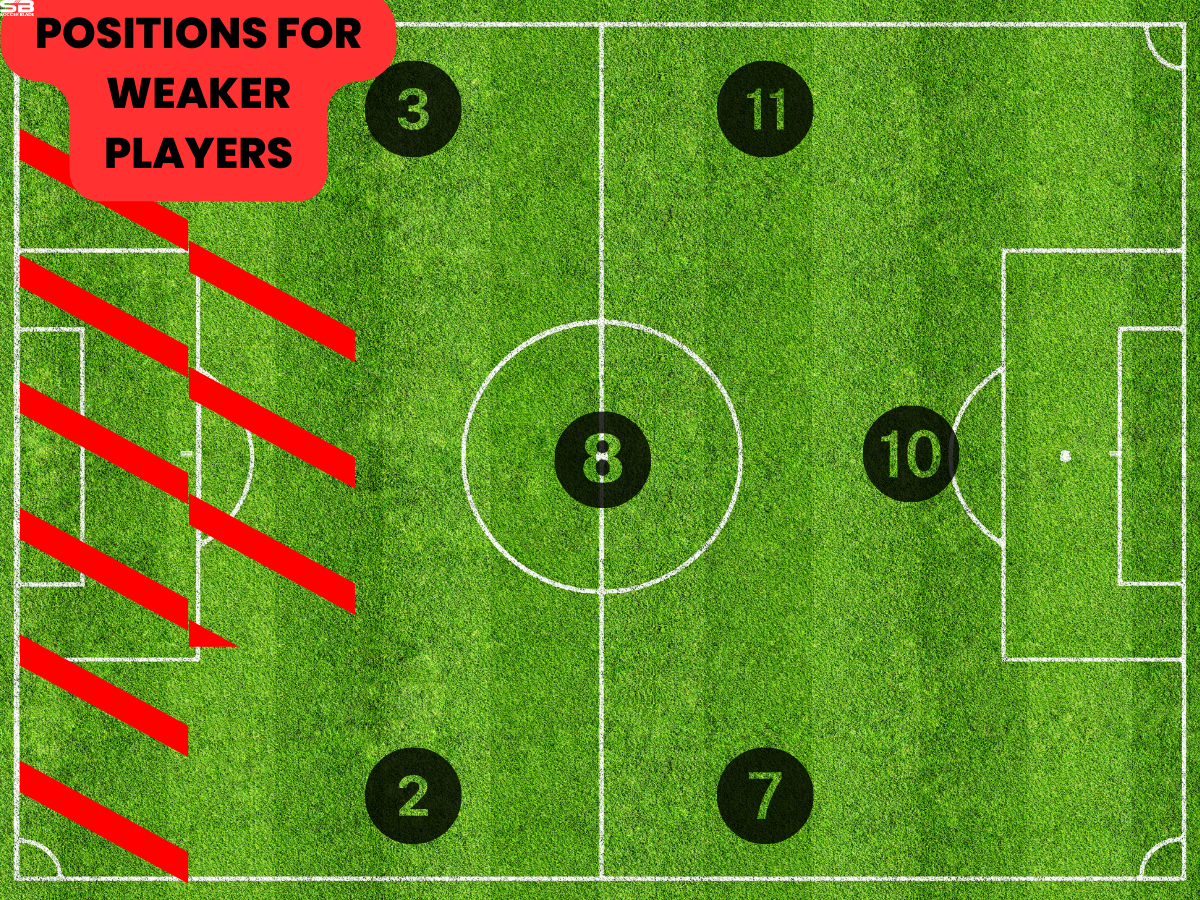
Patience and Persistence with Weaker Players
Persistence from coaches in training weaker players with patience, positive reinforcement, and gradual progression is vital for real improvement and long-term player development. Rushing things often does more harm than good.
- Weaker players may get frustrated more quickly and lose confidence in their abilities. Coaches need patience to build up players’ self-belief and motivation to improve.
- It takes time for technical skills to develop. Coaches must persist in their coaching methods and not get discouraged if results aren’t immediate. Repetition is essential for neural pathways to strengthen.
- Tactical understanding cannot be learned overnight. Weaker players may need concepts explained to them in multiple ways and get plenty of practice time before things click. Persistence in coaching tactics is important.
- Fitness levels take time to increase. Pushing weaker players too hard too fast can cause burnout and injuries or turn them off the sport. Gradual progression over weeks/months is best.
- Providing positive reinforcement of even small successes helps persistence. Coaches must recognize and praise effort and results to keep players engaged.
- Enjoyment keeps players motivated to learn. With patience, coaches can make even drills and losing fun to encourage long-term development.
Patience and persistence in coaching weaker players are about more than just improving their skills. It’s about building their confidence, fostering a positive team environment, developing a growth mindset, and ensuring that soccer remains a source of enjoyment and personal development for them.
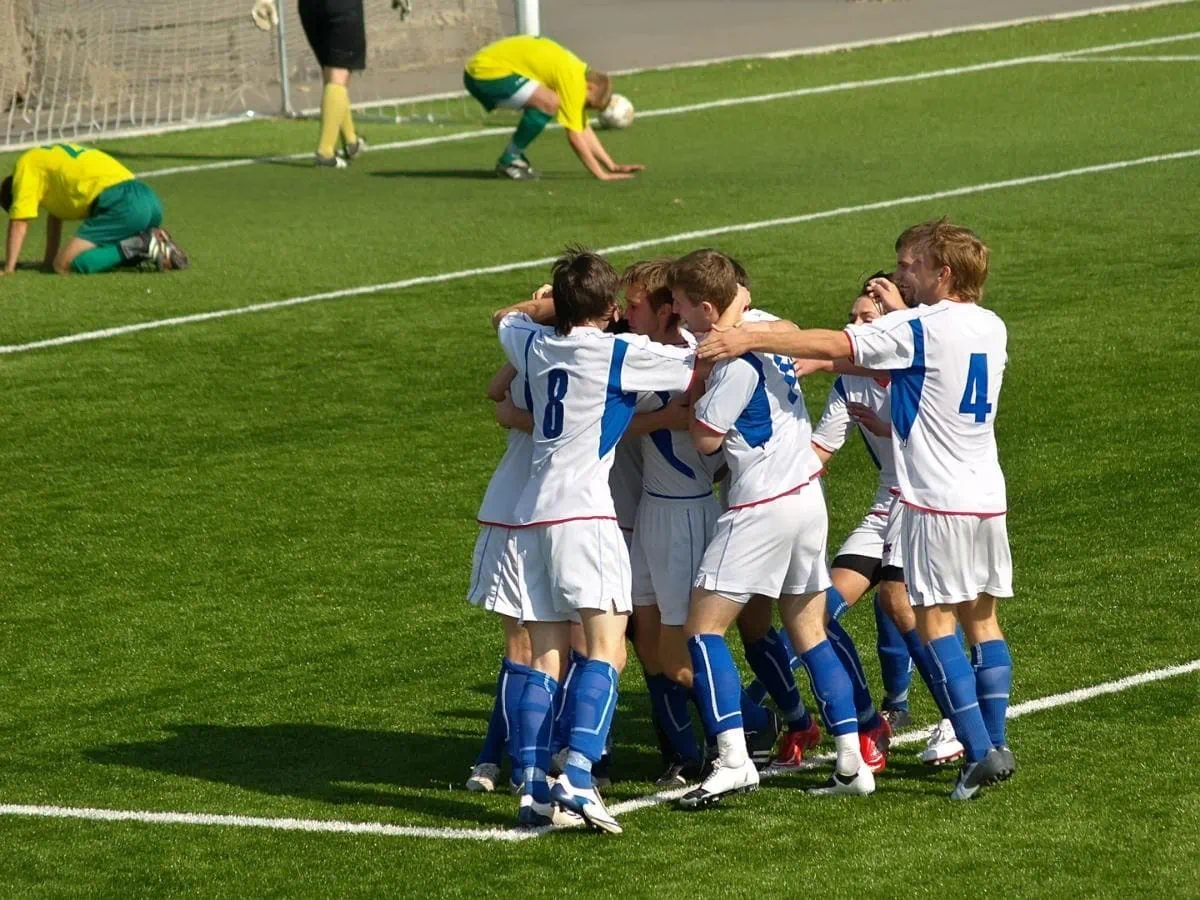
What Position Does the Worst Soccer Player Play?
The worst soccer player should play in a position that matches their skillset without exposing the team. The “worst” player is often in an outside wing or wide forward position. However, assess the specific situation when choosing a position.
Youth coaches often have to deal with multiple weak players. In that case, it’s best to have your strongest players in the center of the field. You want to ensure your defenders and central midfielders are excellent players. Place the weaker players more toward the outside of the field.
Ultimately, coaches must evaluate a player’s struggles when choosing a position. Generally, it’s not wise to put weaker players as central defenders or midfielders due to the importance of those roles. Placing weaker players strategically can aid their development while setting your team up for success.
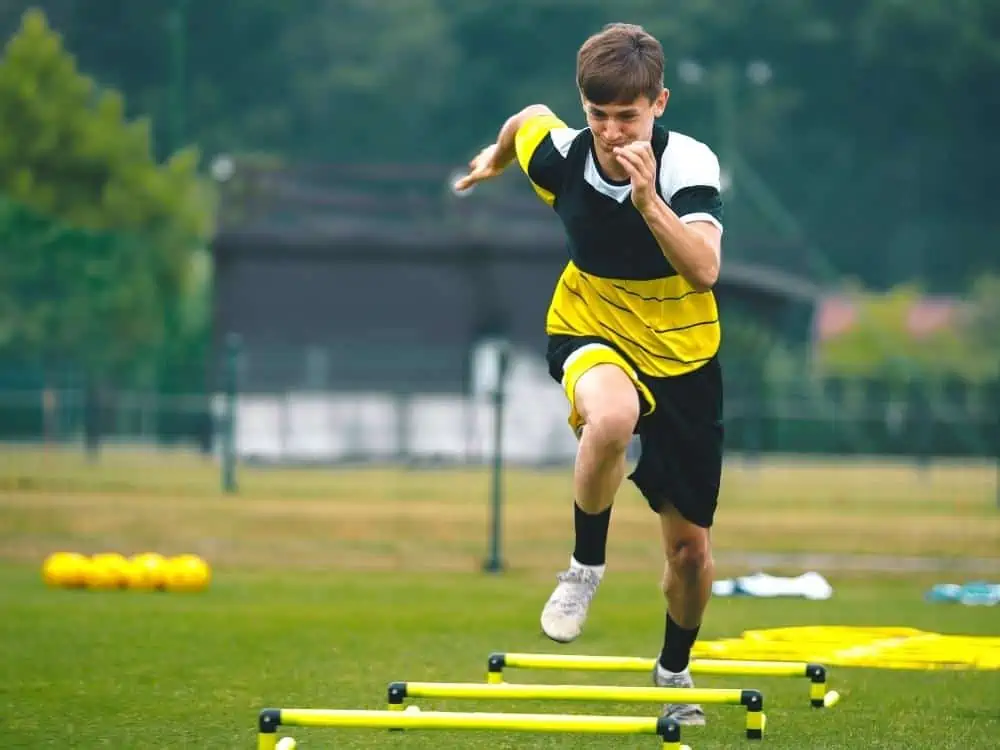
How to Help Weaker Players
Helping weaker players improve their skills and confidence is crucial to coaching, especially in youth soccer. Here are some tips for coaches to effectively support and develop these players:
- Positive Reinforcement: Always start with what the player is doing before offering constructive criticism. Praise their efforts, improvements, and even small victories. This approach fosters a positive environment and boosts confidence.
- Individual Attention: Spend extra time with weaker players during practice. Tailor your coaching to their specific needs and skill levels. This could mean breaking down skills into smaller, more manageable steps for them.
- Set Achievable Goals: Help players set realistic and achievable goals. These goals should be specific, measurable, and time-bound. Achieving these smaller goals can significantly boost a player’s confidence and motivation.
- Skill-Focused Drills: Design drills that focus on the specific areas where the player needs improvement. For example, incorporate more passing exercises into your sessions if a player struggles with passing.
- Encourage Team Support: Foster a team environment where all players support and encourage each other. This can be done through team-building activities and by promoting a culture of inclusivity and respect.
- Game Time Experience: Give weaker players game time experience, even if it’s for shorter periods. Actual gameplay is crucial for the development and understanding of the game.
- One-on-One Feedback: Provide regular, one-on-one feedback. Discuss their progress and areas for improvement, and listen to their concerns or fears. This personal attention can be very encouraging.
- Focus on Fundamentals: Ensure the player has a strong grasp of the basic skills and understanding of the game. Sometimes, players struggle because they missed out on mastering the fundamentals.
- Encourage Practice Outside of Training: Suggest exercises or drills they can do at home. Improvement often happens with consistent practice outside of regular team training.
- Build Mental Toughness: Teach them to handle setbacks and failures as learning opportunities. Encourage a growth mindset where effort and persistence are valued over innate talent.
- Role Models and Examples: Use examples of professional players who overcame similar challenges. This can inspire and show that dedication and hard work make improvements possible.
- Incorporate Fun: Ensure that training sessions are enjoyable. Players are more likely to be motivated and engaged when having fun.
Remember, the goal is to help players develop at their own pace while ensuring they enjoy the sport and feel valued as part of the team.
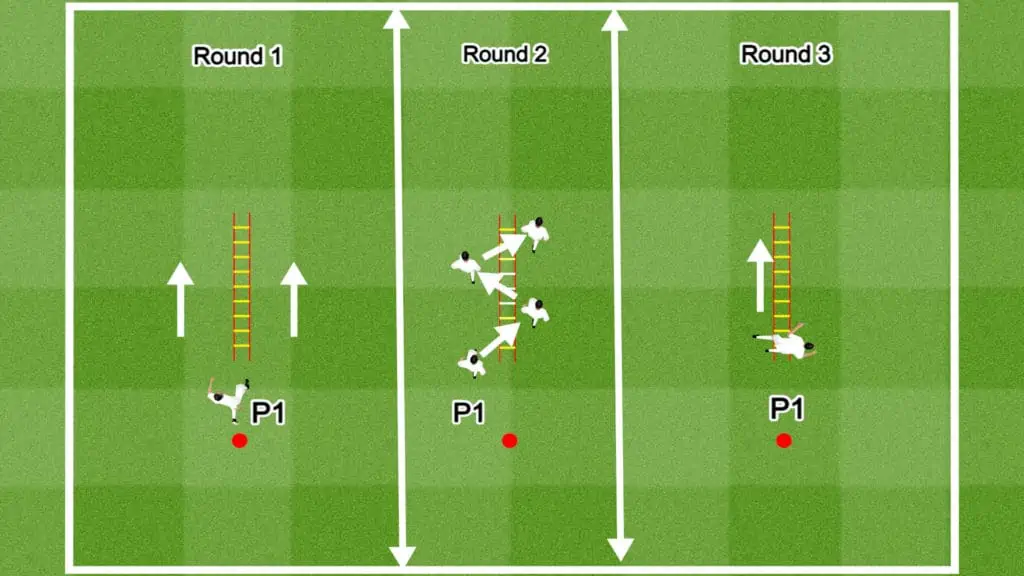
Drills to Help The Weakest Players
Developing specific skills in weaker players requires targeted drills and exercises focusing on soccer’s fundamental aspects. Here are some suggestions for drills and activities tailored to various skills:
- Dribbling Skills:
- Cone Dribbling: Set up a line of cones and have players dribble the ball through them using both feet. This improves close ball control and agility.
- Obstacle Course: Create a course with different obstacles requiring players to change direction, speed, and dribbling technique.
- Passing Accuracy:
- Passing in Pairs: Have players pair up and pass the ball back and forth, gradually increasing the distance as their accuracy improves.
- Triangle Passing Drill: Set up players in groups of three in a triangle formation, practicing quick, accurate passes among them.
- Shooting Technique:
- Target Practice: Set up targets in the goal (using cones or other markers) and have players practice shooting at these targets from different distances.
- Shooting from a Pass: Players receive a pass before shooting, simulating game-like conditions and improving their first-time shooting skills.
- Defensive Skills:
- 1v1 Defending: Pair players up and have one player try to dribble past the defender. This drill improves tackling, positioning, and one-on-one defense.
- Jockeying Drill: Teach players to jockey (move backward while facing the attacker) in a controlled manner, maintaining a defensive stance.
- Ball Control:
- Juggling: Encourage players to juggle the ball with both feet, thighs, and head. This improves touch and control over the ball.
- Trapping and Control: Throw or pass the ball to players at varying heights and speeds, having them control and settle the ball quickly.
- Speed and Agility:
- Ladder Drills: Use an agility ladder to improve foot speed and coordination.
- Sprint and Dribble Races: Combine sprinting with dribbling over short distances to improve speed with the ball.
- Endurance and Stamina:
- Interval Training: Short bursts of high-intensity running followed by rest or light jogging periods.
- Small-Sided Games: Playing small-sided games on a smaller field increases the intensity and frequency of actions, improving overall fitness.
- Positional Awareness:
- Small-Sided Games with Specific Roles: Assign players specific roles in small-sided games to focus on positional responsibilities.
- Shadow Play: Walk through game scenarios without the ball, focusing on positioning and movement.
- Heading:
- Throw, Head, Catch: A partner throws the ball to be headed back before catching it. This drill focuses on technique and timing.
- Crossing and Heading: Practice heading from crosses, focusing on timing, direction, and power.
- Confidence and Decision-Making:
- Pressure Drills: Create scenarios where players must make quick decisions under pressure, such as 2v1 or 3v2 situations.
- Scrimmage with Challenges: During scrimmages, give specific challenges to players, like completing a certain number of passes before attempting a goal.
Always ensure that drills are age-appropriate and skill-level-appropriate. The key is to start simple and gradually increase the complexity as players improve. Encouragement and positive reinforcement throughout the training sessions are crucial for maintaining player motivation and confidence. For more drills with detailed instructions and diagrams, see our Drills Hub.
Share the post "Where Do You Put Your Weakest Soccer Player? (Easiest + Hardest)"
Joel is a seasoned soccer journalist and analyst with many years of experience in the field. Joel specializes in game analysis, player profiles, transfer news, and has a keen eye for the tactical nuances of the game. He played at various levels in the game and coached teams - he is happy to share his insight with you.
